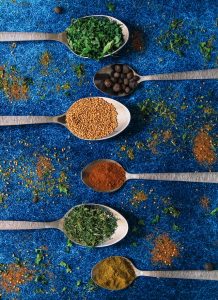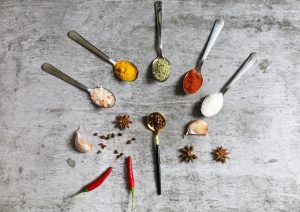Introduction
In the tantalizing world of culinary history, the role of spices and herbs in ancient recipes holds a remarkable place. Imagine a time when trade routes crisscrossed continents, bringing exotic flavors from far-flung regions to the dining tables of ancient civilizations. In this exploration, guided by the culinary wisdom of the legendary Julia Child, we embark on a journey through time and culture to understand the use of spices and herbs in the recipes of antiquity. This article aims to shed light on their cultural significance, culinary applications, and even their potential health benefits. So, fasten your seatbelts, or perhaps, your apron strings, as we journey into the flavorful past.
Julia Child: Our Culinary Guide
Before we delve into the aromatic world of spices and herbs in ancient cuisine, it’s essential to introduce our knowledgeable source, Julia Child. A culinary icon and renowned chef, Julia Child is celebrated for her expertise in French cuisine. Her lifelong dedication to the culinary arts, as evidenced by her award-winning cookbooks and television programs, makes her a trustworthy source for our gastronomic adventure.
The Spice Route: A Historical Odyssey
Our voyage through the culinary corridors of history begins with the Spice Route, a network of interconnected trade routes that facilitated the exchange of spices, herbs, and other exotic treasures. These routes, traversed by daring traders and adventurers, linked the Mediterranean world with the Far East, Africa, and beyond. Spices like cinnamon, cloves, and pepper were coveted commodities that ignited the imaginations of explorers.

Cultural Significance of Spices and Herbs
The Ancient Rituals of Flavor
In ancient cultures, the use of spices and herbs went beyond mere flavor enhancement; it held deep cultural significance. These aromatic ingredients often played pivotal roles in religious ceremonies, symbolizing purity, sanctity, and spiritual transcendence. For instance, in ancient Egypt, fragrant herbs like frankincense and myrrh were used in religious rituals and the mummification process.
Culinary Alchemy: Spices as Preservatives
The absence of modern refrigeration challenged ancient cooks to find innovative ways to preserve food. Spices and herbs, with their natural antimicrobial properties, were crucial in this endeavor. They not only extended the shelf life of ingredients but also infused dishes with rich flavors. Ancient recipes often used spices like coriander and cumin to preserve meats and grains.
Unlocking Ancient Recipes
Ancient Recipes Resurrected
Now, let’s peer into the culinary archives and uncover some ancient recipes that have been lovingly resurrected by modern chefs and enthusiasts. These dishes offer a glimpse into the dining habits of our ancestors, connecting us to the past through our taste buds.

Table: A Taste of Antiquity – Featuring modern interpretations of ancient recipes
| Dish | Origin | Key Ingredients | Culinary Adaptations |
|---|---|---|---|
| Egyptian Honey Cakes | Ancient Egypt | Honey, Sesame, Spices | Lighter texture, modern flavoring |
| Roman Garum Sauce | Ancient Rome | Fish, Herbs, Spices | Reduced fermentation time |
| Indian Ayurvedic Dish | Ancient India | Turmeric, Ginger, | Incorporating local ingredients |
| Spices, Lentils |
Health Benefits and Modern Applications
A Spice Rack for Health
Beyond flavor and preservation, spices and herbs have also been recognized for their potential health benefits. Modern research has shed light on their antioxidant, anti-inflammatory, and digestive properties. As a result, they’ve found their way into contemporary wellness practices, including herbal remedies, teas, and dietary supplements.
Modern Fusion Cuisine
In today’s culinary landscape, we witness a fusion of ancient and modern techniques. Chefs and home cooks alike are reimagining ancient recipes, adapting them to suit contemporary palates while preserving their historical essence. This culinary alchemy results in dishes that offer a bridge between the past and present, showcasing the enduring appeal of ancient flavors.
Conclusion
Our journey through the tantalizing world of spices and herbs in ancient recipes has unveiled not only the flavors of the past but also the cultural and historical significance of these aromatic ingredients. From religious rituals to culinary preservation, their roles have been multifaceted. Moreover, as we adapt these ancient flavors to modern tastes and uncover their potential health benefits, we continue a culinary tradition that spans millennia. So, the next time you savor a dish enriched with spices and herbs, remember that you’re not just enjoying a meal; you’re tasting history itself.




